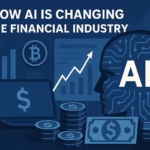What is blockchain
Definition of Blockchain Technology
Blockchain is a type of distributed digital ledger that records data across many computers so that the recorded information cannot be altered retroactively. In simple terms, it’s like a shared Google Doc, but with no central authority, and once data is added, it can’t be deleted or changed.
Unlike traditional systems where a central authority validates data, blockchain uses consensus mechanisms to ensure every participant agrees on the state of the data. This provides transparency, trust, and security—making it a revolutionary technology across many industries.
Brief History and Evolution
The idea behind blockchain began in 1991 when Stuart Haber and W. Scott Stornetta introduced a way to timestamp digital documents. However, the first real application came with the release of Bitcoin in 2009 by an anonymous figure known as Satoshi Nakamoto. Since then, blockchain has evolved beyond cryptocurrency, now being used in fields like healthcare, logistics, real estate, and more.
How Blockchain Works
Structure of a Block
Each block in a blockchain contains:
- Data (such as transaction records)
- A timestamp
- A hash (a unique identifier)
- The hash of the previous block
This structure forms a secure chain of information.
Linking Blocks to Form a Chain
Blocks are linked using their hashes. If someone tries to alter one block, its hash changes, breaking the chain. That’s how blockchain ensures tamper-proof data.
The Role of Hashing and Cryptography
Blockchain relies on cryptographic hash functions like SHA-256. These functions convert any data into a fixed-length string, which changes drastically even with a tiny input alteration. This ensures integrity and security.
Types of Blockchains
Public vs Private Blockchains
- Public blockchains like Bitcoin and Ethereum are open to everyone.
- Private blockchains are restricted to certain users, often within a company or consortium.
Consortium and Hybrid Models
- Consortium blockchains are managed by a group of organizations.
- Hybrid blockchains mix both public and private features to balance transparency and control.
Key Features of Blockchain Technology
Decentralization
There is no central authority in a blockchain network. All nodes have equal power, making the system more democratic and fault-tolerant.
Transparency and Immutability
Once data is added, it becomes permanent. Anyone in the network can view the transactions, increasing trust and transparency.
Security and Anonymity
With cryptography, blockchain ensures user data is secure and pseudonymous, meaning users are identified by cryptographic keys, not personal info.
Use Cases of Blockchain in Real Life
Finance and Banking
Blockchain simplifies cross-border payments, reduces fraud, and enables real-time settlements.
Healthcare
It helps maintain secure and accessible patient records, ensuring privacy and data integrity.
Supply Chain Management
Blockchain enhances traceability, tracking goods from origin to destination transparently.
Voting Systems
Tamper-proof ledgers can ensure fair and transparent elections, preventing fraud.
Blockchain vs Traditional Databases
| Feature | Blockchain | Traditional Database |
|---|---|---|
| Control | Decentralized | Centralized |
| Security | High (cryptographic) | Depends on setup |
| Transparency | Yes | Limited |
| Data Alteration | Not allowed | Allowed |
| Cost | Potentially lower | Higher (maintenance) |
Blockchain is best when trust, transparency, and security are critical.
Benefits of Using Blockchain
Enhanced Security
Cryptographic protocols and consensus mechanisms protect data from hacking.
Reduced Costs
By eliminating middlemen, businesses save on transaction fees and operational costs.
Improved Efficiency
Automation via smart contracts streamlines processes and reduces manual errors.
Challenges and Limitations of Blockchain
Scalability Issues
As blockchains grow, they can become slower and more expensive to maintain.
Regulatory Uncertainty
Different countries have varied policies, making global adoption complex.
Energy Consumption
Some blockchains, like Bitcoin, use Proof-of-Work, which is energy-intensive.
Smart Contracts Explained
What Are Smart Contracts?
Smart contracts are self-executing programs stored on a blockchain. They automatically enforce agreements when predefined conditions are met.
How They Work in Blockchain
Imagine an insurance policy that pays out automatically after verifying a flood via satellite. That’s a smart contract in action—no paperwork, no delays.
Popular Blockchain Platforms
Bitcoin Blockchain
The original and most well-known blockchain used for peer-to-peer cryptocurrency.
Ethereum
Supports smart contracts and decentralized applications (dApps).
Binance Smart Chain
Known for fast and low-cost transactions, ideal for crypto startups.
Blockchain in Cryptocurrency
The Backbone of Cryptocurrencies
Cryptos like Bitcoin, Ethereum, and Litecoin operate entirely on blockchain networks.
Mining and Consensus Mechanisms
Mechanisms like Proof-of-Work (PoW) and Proof-of-Stake (PoS) validate transactions and maintain network integrity.
The Future of Blockchain Technology
Emerging Trends
Expect developments in interoperability, scalability, and regulation to dominate the next few years.
Integration with AI and IoT
Blockchain will soon merge with AI and IoT, ensuring smarter automation and safer device communication.
How to Learn Blockchain as a Beginner
Top Courses and Resources
- Coursera: “Blockchain Basics” by University at Buffalo
- Udemy: “Blockchain and Bitcoin Fundamentals”
- FreeCodeCamp: Blockchain tutorials
Communities and Forums
- Reddit: r/blockchain
- StackExchange: Blockchain Q&A
- GitHub: Explore blockchain projects
FAQs About What is Blockchain
What is a simple definition of blockchain?
It’s a digital ledger that records transactions securely, transparently, and without the need for a central authority.
Who invented blockchain?
The concept dates to the 1990s, but Satoshi Nakamoto popularized it with Bitcoin in 2009.
Is blockchain only used for crypto?
No, it’s used in healthcare, finance, supply chains, and more.
Can blockchain be hacked?
While highly secure, some vulnerabilities exist, especially in poorly coded smart contracts.
What are the disadvantages of blockchain?
Issues include energy consumption, scalability, and regulatory hurdles.
How do I invest in blockchain technology?
You can invest in blockchain stocks, ETFs, or cryptocurrencies. Always do your research.
Conclusion: Is Blockchain the Future of Digital Trust?
Yes—blockchain is shaping the future of digital trust. It offers transparency, security, and decentralization that traditional systems simply can’t match. While challenges exist, the potential is enormous. Whether you’re a curious learner or a future investor, now’s the time to understand what is blockchain and its transformational power.



